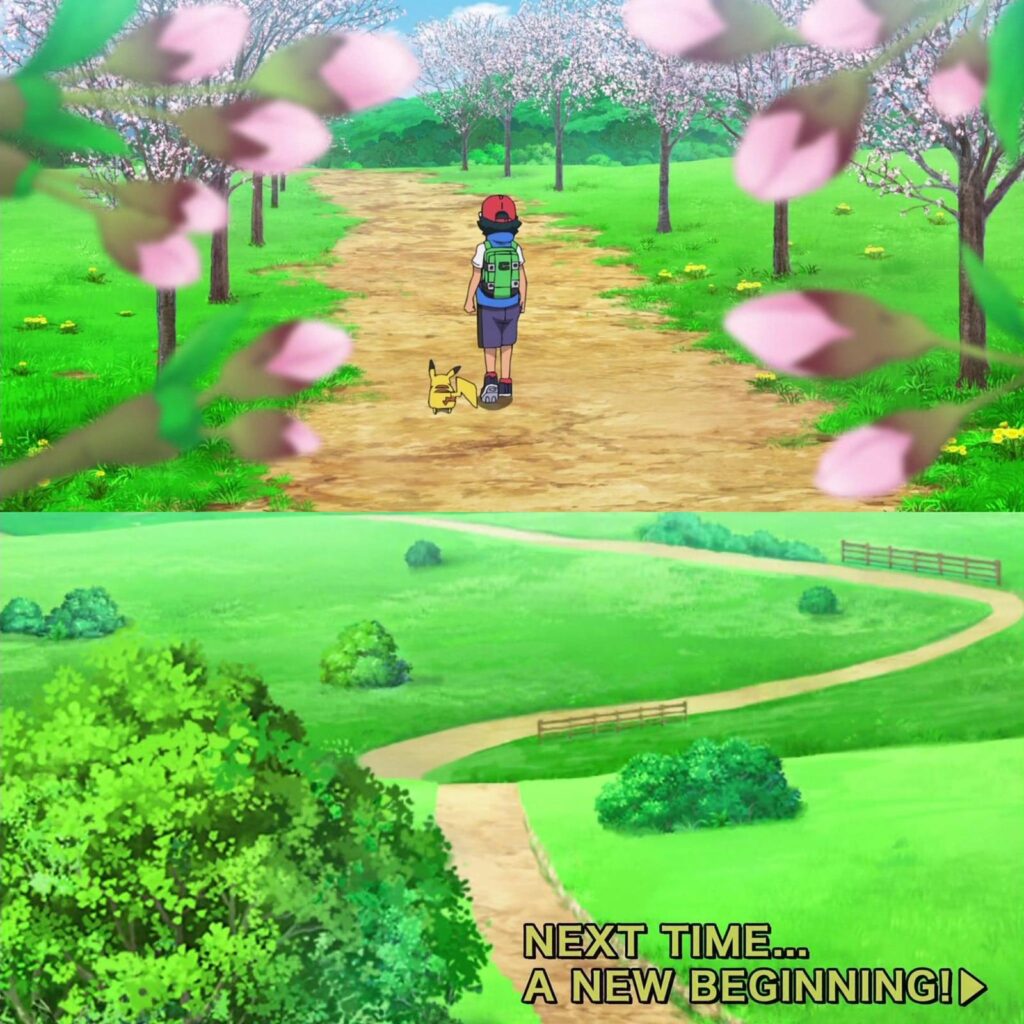
Let’s interrupt the usual flow of our blog to bring you an interesting fact: today, March 24th, 2023 we will see a historical event unfolding. Today, Ash Ketchum from Pallet Town will finish his 25-year-long adventure.
Yes, we are going to talk about Pokémon today.
A Little Insight Into the Adventure
The Pokémon Franchise was born from a game. It all started in 1996 with the release of Pocket Monsters Red and Green, and from there it grew to one of the most known and powerful franchises in the world.
The animated series debuted on television on April 1, 1997, depicting the adventures of a 10-year-old boy and his – not as friendly at the beginning – friend Pikachu who travel through different regions and have battles. In addition to the main anime series, there have also been spin-off series, including Pokémon Chronicles, which explores the adventures of other characters in the Pokémon world, and Pokémon: Twilight Wings, a series of short episodes that focus on various characters and events within the Galar region of the Pokémon world
What Does Pokémon Have to do with Marketing?
Nothing is evergreen. The growth of the Pokémon Franchise has not been a matter of luck but an amazing example of what powerful marketing is capable of: The Pokémon Franchise is a great case study and a perfect example of what we should achieve with our audiences.
The Pokémon franchise has been a marketing powerhouse for the past 25 years and has used many strategies to maintain its popularity and grow its fanbase. Below, we will explore a couple of the strategies they used and how they have helped them stay at the top for so long:
- Diversification: While it would have been super easy to stay in their lane as a video game, they knew how powerful diversification can be. From the early days of the video games, the Pokémon franchise has expanded to include TV shows, movies, trading cards, and lots of other products, giving them the ability to connect to a lot of different markets and targets.
- Cross-Media Promotion: One of the keys to the success of the Pokémon franchise has been its ability to cross-promote its various media formats. You will often see that their products connect between them (you can get special in-game bonuses in Pokémon GO, for example, by connecting it with Pokémon Scarlet and Violet). That connectivity and their ability to promote each format through the others, has helped Pokémon build a loyal fanbase that eagerly anticipates each new release.
- Fan Engagement: The Pokémon Franchise is a community. Fans are always encouraged to participate in the world of Pokémon, whether through fan art, fan fiction, or fan-made games boosting their User Generated Content (UGC) and creating a sense of loyalty while also allowing them to gather valuable feedback and insights from their audience.
- Continuous Innovation: Each new release of Pokémon is an adventure in itself. With the introduction of new features, characters, and gameplay mechanics, they have managed to keep the fanbase engaged and interested. They are early adapters and will not hesitate to integrate new technologies, such as augmented reality, into their games and other products.
- Branding: To be fully honest, if you hear someone say “Gotta Catch ‘Em All” you will recognize the reference. The Pokémon franchise has successfully built and maintained its brand throughout all the innovations and changes. Pokémon has created a visual and linguistic identity instantly recognizable to fans everywhere. Pokémon is familiar to everyone, and that has been a key factor in building trust among fans and has also made it easier for the franchise to expand into new markets and demographics.
- Collaborations and Partnerships: The Pokémon franchise has partnered with other brands and companies to promote its products. From collaborations with fast food chains like McDonald’s to partnerships with fashion brands like BAPE, the franchise has found creative ways to extend its reach and appeal to new audiences while staying fresh and relevant.
The future of Pokémon

The image above marks the end of an era. The Pokémon Franchise, its marketing, and the fanbase are about to go through changes. And maybe I am writing these words, not as a marketer, but as a long-time fan of the franchise: I am eager to see what new adventures will Pokémon bring, and of course, see what their strategy will be to give the Franchise another 25 years of existence.





